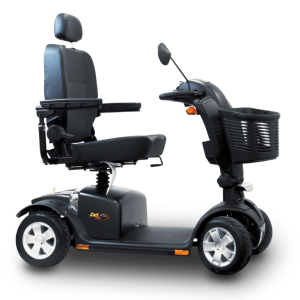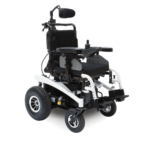Understanding the Importance of Home Accessibility
Home accessibility is crucial for individuals with mobility challenges, ensuring they can navigate their living spaces safely and comfortably. Assessing home accessibility involves evaluating the current environment to identify barriers and implement solutions that enhance independence. This process is essential for aging in place, accommodating disabilities, and promoting overall quality of life.
The Role of Professional Assessments
Professional home accessibility assessments are typically conducted by occupational therapists or certified aging-in-place specialists. These professionals have the expertise to evaluate a home comprehensively, considering both current and future needs. They assess various aspects, including the layout, furniture placement, lighting, and the presence of potential hazards. Their goal is to create a safe, functional, and accessible environment tailored to the individual’s specific requirements.
Key Areas of Focus in Accessibility Assessments
A thorough home accessibility assessment covers several key areas. Entryways and exits are examined to ensure they are wide enough for wheelchair access and have ramps or lifts if necessary. Inside the home, doorways and hallways should be spacious and free of obstructions. Bathrooms are another critical focus area, often requiring modifications such as grab bars, roll-in showers, and raised toilet seats. Kitchens may need adjustments to countertop heights, accessible appliances, and easy-to-reach storage solutions. Discover how large scooters can transform your home accessibility schedule your assessment today.
Identifying and Implementing Solutions
Once the assessment is complete, the professional will recommend specific modifications and assistive devices to address identified barriers. These solutions can range from simple changes, like installing grab bars and lever handles, to more extensive renovations, such as widening doorways and adding stairlifts. The goal is to create a seamless and accessible living environment that meets the individual’s needs without compromising on comfort or aesthetics.
The Benefits of a Customized Approach
Every individual has unique needs, making a customized approach to home accessibility essential. Personalizing the modifications ensures that the solutions are both practical and effective. For instance, someone who uses a wheelchair will have different requirements than someone with visual impairments. A tailored assessment considers these differences, resulting in a more functional and supportive home environment.
Maintaining Accessibility Over Time
Accessibility needs can change over time, particularly as individuals age or if their condition progresses. Regular reassessments are vital to ensure the home continues to meet the resident’s needs. This proactive approach helps prevent accidents and promotes ongoing independence. By staying adaptable and responsive to changing requirements, homeowners can maintain a safe and accessible living space for the long term.
Enhancing Quality of Life Through Accessibility
Ultimately, home accessibility assessments aim to enhance the quality of life for individuals with mobility challenges. By identifying barriers and implementing practical solutions, these assessments ensure that residents can live comfortably and safely in their homes. The peace of mind that comes from knowing one’s living space is secure and accessible is invaluable, fostering a sense of independence and well-being.
Conclusion
Home accessibility assessments are a vital step in creating a safe and supportive environment for individuals with mobility challenges. Through professional evaluations and tailored solutions, these assessments address specific needs and promote independence. By regularly updating and maintaining accessibility features, homeowners can ensure their living spaces remain functional and comfortable, enhancing the overall quality of life.
FAQs
- What is a home accessibility assessment, and why is it important?
Answer: A home accessibility assessment is a comprehensive evaluation of a living space to identify barriers that hinder mobility and safety for individuals with disabilities or mobility challenges. It is important because it helps create a safer, more functional environment, allowing individuals to live independently and comfortably in their homes.
- Who typically conducts a home accessibility assessment?
Answer: Home accessibility assessments are typically conducted by occupational therapists, certified aging-in-place specialists, or other professionals trained in evaluating and modifying living spaces for accessibility. These experts have the knowledge and experience to identify potential hazards and recommend appropriate modifications.
- What areas of the home are commonly evaluated during an accessibility assessment?
Answer: Common areas evaluated during an accessibility assessment include entryways and exits, doorways and hallways, bathrooms, kitchens, and living spaces. The assessment focuses on ensuring these areas are accessible, safe, and functional, considering aspects like width of doorways, presence of ramps or lifts, grab bars in bathrooms, and accessible appliances in kitchens.
- What types of modifications might be recommended after an assessment?
Answer: Recommended modifications can vary based on the individual’s needs but may include installing grab bars, ramps, stairlifts, widening doorways, lowering countertops, adding roll-in showers, and improving lighting. The goal is to make the home more navigable and safe for the resident.
- How often should a home accessibility assessment be conducted?
Answer: It is advisable to conduct an accessibility assessment whenever there is a significant change in the resident’s mobility or health status. Additionally, regular reassessments every few years can help ensure the home continues to meet the resident’s needs, especially as those needs evolve over time. Regular updates help maintain a safe and accessible living environment.




